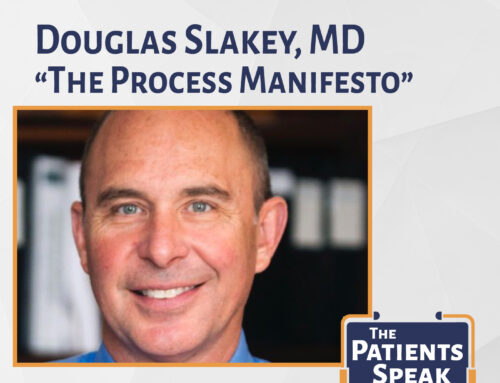Presented at the Future of Preventive Medicine and Public Health medical conference
83bar was honored to be asked to present a case study of our decentralized clinical trial process at a recent international medical conference, Future of Preventive Medicine and Public Health, held in Berlin, Germany, and streamed live for a global audience.
We thought you would also like highlights of other topics that were shared. The other papers shed light on opportunities in the future for preventive medicine and public health that will improve the patient journey. And of course, it will be our role to help activate patients so they can take advantage of these innovations
Reward preferences of the youngest generation: Attracting, recruiting, and retaining Generation Z into public sector organizations
Presented by: Nana Amma Acheampong, University of Maryland Global Campus USA
Background: Picture Archiving and Communication System (PACS), one of the common systems used in hospitals, is of special importance due to its diagnostic nature. Evaluating this system from the perspective of radiologists as one of its main users can have many benefits for designing future systems. In this study, the evaluation of the system was performed based on the viewpoints of radiologists.
Method: This cross-sectional study was conducted using the census method of radiologists in Al-Zahra and Kashani hospitals in Isfahan. The data collection method was a standard questionnaire including 40 items with 3 options Likert scale. The analysis of the findings was performed using SPSS 21 software. Findings were presented as frequency distribution tables, and the research hypothesis was tested using independent sample t-test.
Results: The mean age of physicians participating in the study was 34.94 ± 6.57 years. Statistical tests showed that there was a significant difference between PACS A and B in terms of potential benefits and challenges of PACS, but no significant difference was observed between the two systems in terms of systems comparison with a traditional film-based system.
Conclusion: Most users of both systems believe that PACS include many advantages over the traditional system and can have positive potential effects on patient care. However, issues such as slow system speed, system lags and disconnection, and inadequate workstations remain concerns.
Nana Amma Acheampong is an educator and management consultant for MKU4 Express Courier & Logistics. After receiving the first part of her tertiary education in Ghana, West Africa, Mrs. Acheampong worked as an Administrative Liaison Officer at the Office of the President, Ghana. Also, she managed administrative and communications affairs for the Economic Community of West African States’ (ECOWAS) offices in Guinea Bissau and Cote D’Ivoire.In 2019, Mrs. Acheampong graduated from the University of Maryland Global Campus with a doctorate degree in Business Administration. Since 2018, Mrs. Acheampong has contributed, in an advisory capacity, to Rural Heights Foundation (a non-profit in Ghana, West Africa).
Low adoption of EHR patient portal in U.S.A adult population: What has social media and digital divide got to do with it?
Presented by: Ahmed Otokiti, Icahn School of Medicine at Mount Sinai Hospital USA
Objective: Our study aimed to determine the effect of a digital divide in the adoption of online patient portals by the motivated patients who wish to improve their health outcomes by use of internet and information technology, to assess determinants of low adoption rates of online portals, and to explore social media use as a correlation to patient portal use.
Methods: We utilized data from the Health Information National Trends Survey (HINTS, 2017 and 2018). We performed a cross-sectional study analyzing the outcome variable of patient portal use with several predictor variables: age, marital status, gender, mental health, education, Medicaid, income, number of people in household, trust, social media, chronic disease, and health app use. Basic descriptive statistics and logistic regression were performed using SPSS version 25.
Results: Our study found that low adoption rates go beyond the digital divide. Previously identified digital divide factors like health insurance type, age, and chronic disease, which are determinants of patient portal use in the general population, were not significant predictors in our motivated sampled population. The study also found that a correlation exists between social media use and patient portal use.
Conclusions: Many of the factors previously identified by the literature may not be a barrier to patient portal use by self-motivated individuals, which underscores the importance of self-motivation in patient portal use. Behavioral/motivational interventions and improvement in patient portal usability can improve its public health significance.
Ahmed Otokiti is an advocate of 360 degrees digital health evaluation, a holistic methodology of digital health outcome evaluation emphasizing its impact on public health improvement and health disparity. He is a clinical informaticist and clinical instructor at the Icahn School of Medicine at Mount Sinai Hospital in New York. He champions various electronic health record optimization projects for efficiency and clinical workflow improvement.
Global digital public health leadership
Presented by: Bandar Al Knawy, Ministry of National Guard Health Affairs, Saudi Arabia
Background: A visionary leader views adversities as leading to new opportunities. In response to the viral war brought by Covid-19, a new leadership toolkit is essential. This toolkit is digital leadership in health and care.
Objectives: Covid-19 has brought the importance of public health to the forefront as a critical global health security issue, and digital health has been essential for data and public health in this pandemic. A global and unified approach to current and future disease outbreaks, can be achieved by addressing interoperability of health and care systems, generating high quality data, and training and up-skilling of healthcare workforce front liners. In addition, the culture of innovative solutions and research must be enhanced.
Platform: The current global public health framework allows nations to report and share limited information by a reporting mechanism (e.g., to the World Health Organization). As the world enters the digital era, in addition to a potential centralized platform, information-sharing has to move toward real-time, high quality sharing and a peer-to-peer mode. A multi-actor framework must be fostered to bring together privacy and data protection authorities, governments, data providers, public health institutions, and researchers. To establish robust preparedness protocols for future pandemic emergencies, collaborative networks should be created in peacetime. Sustainable funding and investment to build a global infrastructure for data exchange that is connected in back-end databases run by the health system and government, will allow data, if trusted, to flow freely and securely to where it is needed for the global health system.
Conclusion: A framework that standardizes and verifies such information is necessary as a foundation to aid in constructive communication and data-sharing within the international community. Such a framework should enhance communication and connectivity to cope with the scale and pressure of future pandemic events.
Bandar Al Knawy is senior executive of the Ministry of National Guard Health Affairs and president of King Saud bin Abdulaziz University for Health Sciences, Saudi Arabia. He serves as an executive member of the Saudi Health Service Council, the national governing healthcare body in Saudi Arabia.





